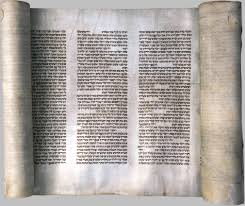Why is Classical Chinese written from right to left?: Difference between revisions
Created page with "과거 한문은 모두 다 같은 방향으로 쓰여졌었다. 오른쪽 위에서 밑으로 그리고 왼쪽으로 쓰여내려갔다. 여러 說이 있는데 제일 타당한 것부터 적어보겠다. 1. 죽간(竹簡)" Tags: Mobile edit Mobile web edit |
iwu |
||
| (One intermediate revision by the same user not shown) | |||
| Line 1: | Line 1: | ||
Classical Chinese was written from top to bottom, from right to left. There are few reasons why, and I will start with the most rational one with the top. | |||
1. | 1. Bamboo and wooden slips (竹簡) | ||
:[[File:ClipCapIt-240423-083923.PNG]] | |||
Bamboo and wooden slips were rolled into a scroll, and it was rolled opened from right to left while right hand is holding the right end. So, it's only natural to have the writing start from the right. Sinosphere isn't the only region where writing is done from right to left. All civilizations that kept its words in a scroll early days did the same. For example, Torah was kept as a scroll so we find Hebrew being written from right to left. However, it wasn't written from top to bottom one line at a time because the material used was either papyrus or animal skin, while wooden slips only provided a narrow space just enough to fit one line of text. | |||
:[[File:ClipCapIt-240423-084824.PNG]] | |||
2. Brush strokes are easier written from top to bottom | |||
The strokes of a character were written usually from top to bottom, so it was more natural to continue writing at the bottom of the character. | |||
3. Right side had philosophical significance from the ancient times | |||
Right side signified dominance and it was considered more valuable than the left side. It's only rational to consider the right side with anything that's related to the use of hand to be superior than the left. (In the past, people did not try to standardize things for the masses like it is today, so arguing that it is unfair to write according to the rules of Classical Chinese is similar to saying that people in the past were uncivilized because they didn't value keeping time due to the lack of clocks.) | |||
Also, kings and parents usually sat on the upper ground. | |||
The old expression 无出其右 means there is nothing more superior in wisdom or abilities to the right. | |||
Latest revision as of 11:04, 23 April 2024
Classical Chinese was written from top to bottom, from right to left. There are few reasons why, and I will start with the most rational one with the top.
1. Bamboo and wooden slips (竹簡)
Bamboo and wooden slips were rolled into a scroll, and it was rolled opened from right to left while right hand is holding the right end. So, it's only natural to have the writing start from the right. Sinosphere isn't the only region where writing is done from right to left. All civilizations that kept its words in a scroll early days did the same. For example, Torah was kept as a scroll so we find Hebrew being written from right to left. However, it wasn't written from top to bottom one line at a time because the material used was either papyrus or animal skin, while wooden slips only provided a narrow space just enough to fit one line of text.
2. Brush strokes are easier written from top to bottom
The strokes of a character were written usually from top to bottom, so it was more natural to continue writing at the bottom of the character.
3. Right side had philosophical significance from the ancient times
Right side signified dominance and it was considered more valuable than the left side. It's only rational to consider the right side with anything that's related to the use of hand to be superior than the left. (In the past, people did not try to standardize things for the masses like it is today, so arguing that it is unfair to write according to the rules of Classical Chinese is similar to saying that people in the past were uncivilized because they didn't value keeping time due to the lack of clocks.)
Also, kings and parents usually sat on the upper ground.
The old expression 无出其右 means there is nothing more superior in wisdom or abilities to the right.

